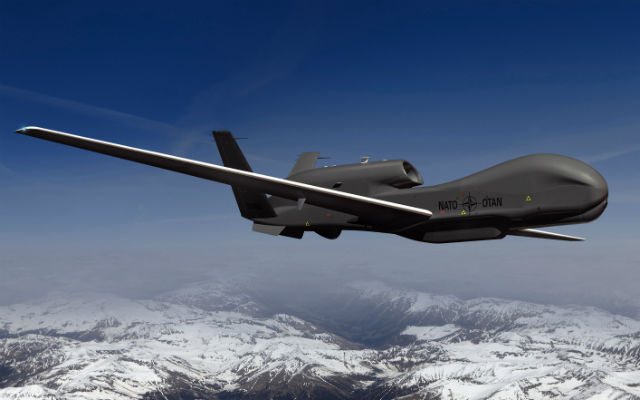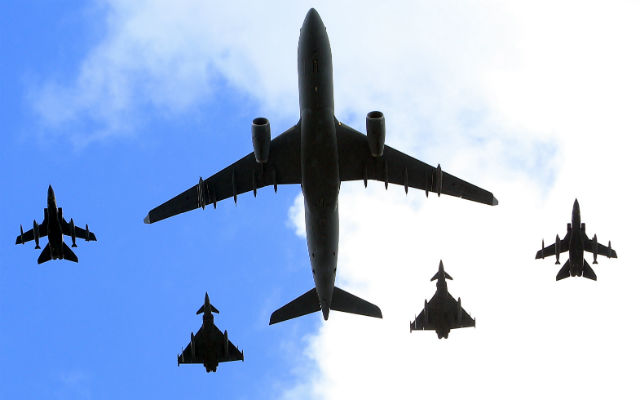The world’s leaders will be flocking to Newport next week, as the Welsh town plays host to a NATO summit on 4-5 September – and the event is shaping up to be anything but routine.
Indeed, the 26th annual summit comes at a time when many nations are engaged in territorial disputes, civil wars and the rise of insurgency. All eyes will surely be on the leaders to shape a response to events in the Middle East, eastern Europe and the South China Sea.
The UK’s National Defence Association (NDA) has written a letter to UK prime minister David Cameron, calling for him not to underestimate the importance of the summit in shaping NATO’s involvement in international peacekeeping.
The letter states: “At the time of the last NATO summit in Chicago the world looked very different; there was hope that risks to world peace were containable and that actions put in hand would assist in this regard.
“In 2014, NATO and the West face an increasing number of threats whose seriousness is as great as has been seen since the end of the Cold War.”
The NDA adds that Middle East is “in turmoil”, and the UK’s withdrawal from Afghanistan is likely to open up further instability in the region. Also, in Southeast Asia, “a resurgent China is flexing her muscles in the China Seas”, consolidating the nation’s hold on raw materials in Africa – and possibly moving closer to Russia.
“Nearer home, Russia seems resolved to secure her interests through military means, and by doing so threatens the security of NATO’s newer members,” it adds.
Despite reports that Russia had not been invited to attend the summit as a result of its advance into Ukrainian territory, at time of press NATO claimed that a decision has not yet been made.
One significant result of the Chicago summit in 2012 was the signing of a contract for five Northrop Grumman Global Hawk Alliance Ground Surveillance (AGS) systems.
Fifteen nations are currently involved in the unmanned AGS development, although all 28 NATO members will benefit from the use of the five systems – based out of Sigonella air force base in Sicily – when required. Flight testing will begin next year, while initial operational capability for AGS is expected in 2017.

Northrop Grumman
Whether new aircraft orders will be made during the Newport summit remains to be seen, but the role of aircraft in support of NATO’s ability to react to international crises is paramount. This was demonstrated in April, when a fleet of aircraft from the treaty’s nations was deployed in support of NATO’s Baltic air policing mission over Estonia, Latvia and Lithuania.
The deployment was bolstered by a variety of aircraft, supporting Poland’s provision of a four-month quick reaction alert cover in response to rising tension in Russia and Ukraine.
This included the deployment of four UK Royal Air Force Eurofighter Typhoon FGR4 combat jets, four Polish air force RAC MiG-29s, four French air force Dassault Rafale C fighters and four Royal Danish Air Force Lockheed Martin F-16AMs.
Separately, six Royal Canadian Air Force Boeing CF-18A fighters left Bagotville air base in Quebec for Romania on 29 April, accompanied by an Airbus A310 tanker/transport.
NATO also announced in August it was to invest some $250 million to upgrade its Boeing E-3A airborne warning and control system (AWACS) fleet.
The fleet of 17 Boeing 707-derived aircraft will receive digital flightdeck upgrades under the effort, which has so far seen one AWACS aircraft undergo work in an engineering, manufacturing and development phase.
Flight testing with this aircraft is to commence in the fourth quarter of 2014, and the jet will enter operational use in December 2015. Modifications to a further 13 of the fleet will begin in 2016, with the programme scheduled for completion in 2018.
Boeing will perform an identical avionics update on one of the US Air Force’s AWACS aircraft from November, as part of the same contract placed by NATO.
Meanwhile, AirTanker – the consortium that manages the UK’s Airbus A330 Voyager tanker/transport fleet – has proposed allowing NATO nations the option of dipping into its spare capacity.
The proposal would allow NATO to use part of a “surge” fleet of five Voyagers, which will be supplied between early next year and mid-2016. These will follow a core inventory of eight converted aircraft in use with the RAF, and another operated by AirTanker crews on the civilian register.

Crown Copyright
AirTanker hopes to see the offer of spare capacity raised by the UK during the NATO summit. This proposal would help fill an air-to-air refuelling capability shortfall that exists outside of the US. The UK has more capacity from the Voyagers than it requires, the company says.
One of the programme’s spare aircraft has already been placed with Thomas Cook Airlines from May 2015 under a three-year agreement, but the remaining four have yet to be placed.
Source: FlightGlobal.com























